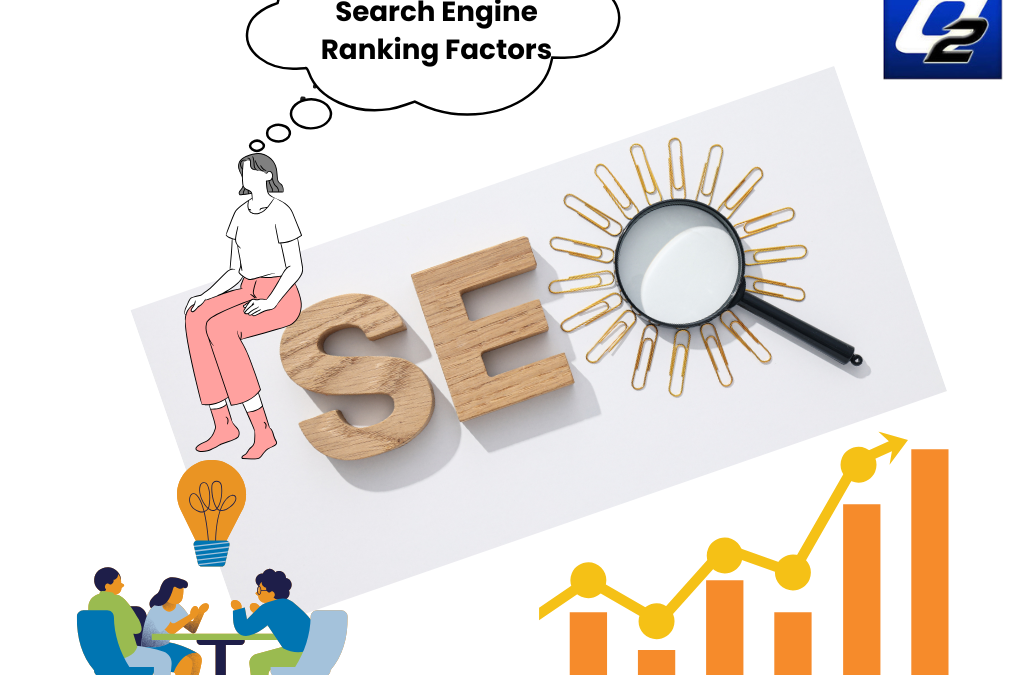
by Shashikanth Heerekar | May 10, 2025 | SEO News, Technology
Acknowledging the key ranking factors that search engines use to index content and how to improve your site’s online performance.
Introduction
Search engine ranking factor helps Google or other search engines determine which websites should be listed top when someone searches for something. The internet has a lot of information, and search engines work hard to find the most helpful answers quickly.
To do this, they look at every page and check for signs that it is good, like easy-to-read content, fast loading speed, working well on phones, and links from other trusted websites. These signs are called ranking factors.
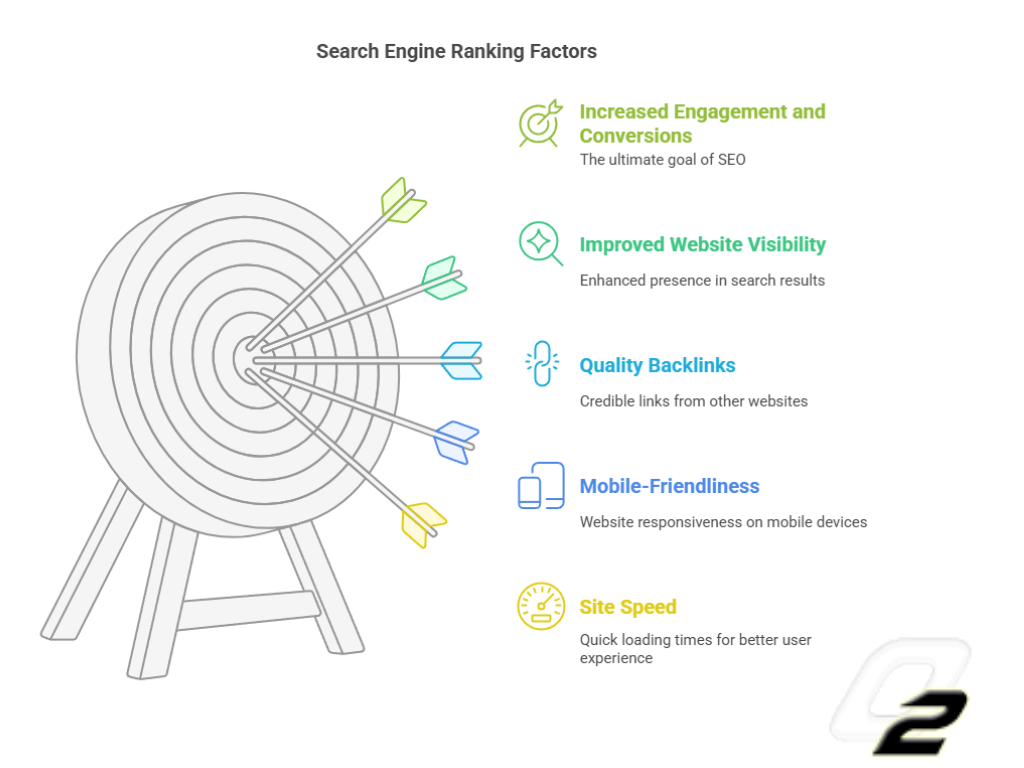
This comprehensive guide delves into the essential ranking factors shaping SEO in 2025, providing actionable insights to optimize your online presence effectively. To better understand this, imagine you’re asking a librarian to help you find the best book about “plant care for beginners.”
The librarian doesn’t randomly pick a book. They look for one that’s well-written, easy to understand, frequently borrowed, and recommended by other gardening experts.
Similarly, when you type the same question into Google, it checks thousands of websites. It picks those that have fresh, detailed, and reliable content, load quickly, look good on mobile, and are linked to by other trusted gardening websites.
If your website is like a helpful, neatly organized, and frequently recommended book in a library, search engines will likely show it to users first. That’s why improving your content, making your website user-friendly, and building a trustworthy online reputation are all important steps in climbing the search rankings.
1. Quality of Content and Applicability
The quality and applicability of content are very important. It is the key factor for any search engine and is considered the first foundation. Google( search engines ) emphasizes the quality of content that delivers value to users and addresses their queries comprehensively and accurately.
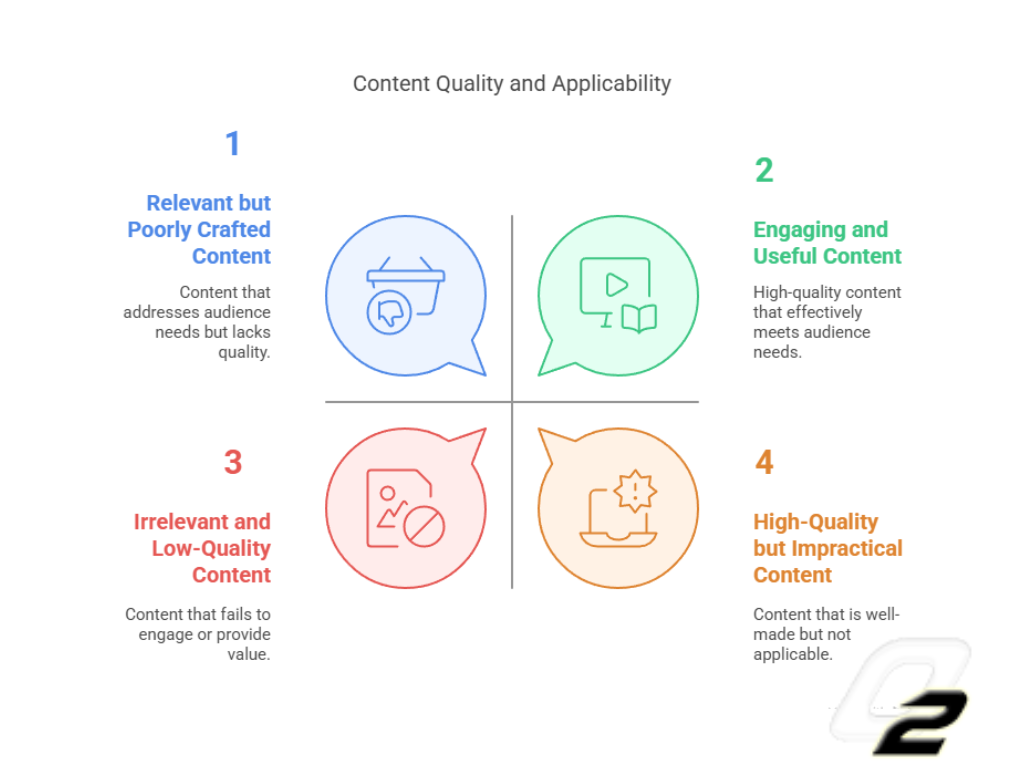
Best methods :
- Complete coverage: Ensure your content fully covers the concept, providing potential questions for users.
- Originality: Create unique content that offers fresh perspectives or information not readily available elsewhere.
- User Engagement: Incorporate engaging elements like images, videos, and interactive features to enhance user experience.
Example: A detailed guide on “Sustainable Living Practices” that includes practical tips, case studies, and expert interviews will likely rank higher than a generic overview lacking depth.
2. E-E-A-T: Experience, Expertise,
Authoritativeness, and Trustworthiness
Let’s break this topic down in a very easy way.
Imagine Google is like a really smart librarian trying to determine if a book is reliable or worth reading for related information.
When it comes to topics related to your health or your money (things they call “Your Money or Your Life” or YMYL), Google makes extra sure the information is top-notch.
That’s where E-E-A-T comes in. It’s like a checklist Google uses to see if the “book” (or website content) is trustworthy:

- Experience: The person who wrote this blog does actually know what they’re talking about or what they exactly wanted to deliver? Think of someone who is giving cooking advice, does he actually ever cook?
- Expertise: Does the person have special skills or knowledge in this area? Like a doctor talking about medicine or a mechanic explaining car repairs or SEO expert.
- Authoritativeness: Is this person or website considered a go-to source for this topic by other experts? Are they well-known and respected in their field?
- Trustworthiness: Does the website and the person who wrote it seem honest and reliable? Do they have clear contact information? Do they tell you how they handle your data (privacy policy)?
So, when Google looks at a website, especially about health or money, it pays close attention to these four things.
The sentence then gives an example:
“A financial advice blog authored by certified financial planners, citing authoritative sources like government publications, will establish higher trustworthiness.”

Think of it this way:
- Certified financial planners show expertise (they have the qualifications).
- Citing authoritative sources like government publications shows they’ve done their homework and are backing up their advice with reliable information, which builds trustworthiness and authoritativeness.
Because of these things, Google is more likely to see this blog as a reliable source of financial advice compared to a blog written by someone with no financial background and no sources.
E-E-A-T helps Google ensure you’re getting advice on important topics from people who know their stuff and can be trusted.
3. Mobile-First Indexing
Imagine you’re a movie director. Now you have two versions of the set: a grand, elaborate stage designed for a wide movie screen, and a smaller, more streamlined set built for a smartphone screen.
Nowadays, most of your audience is watching the movie on their phones, so you decide to emphasize the first smartphone set. You’ll make sure that the set looks fantastic, is easy to navigate, and has all the important elements visible on the smaller screen.
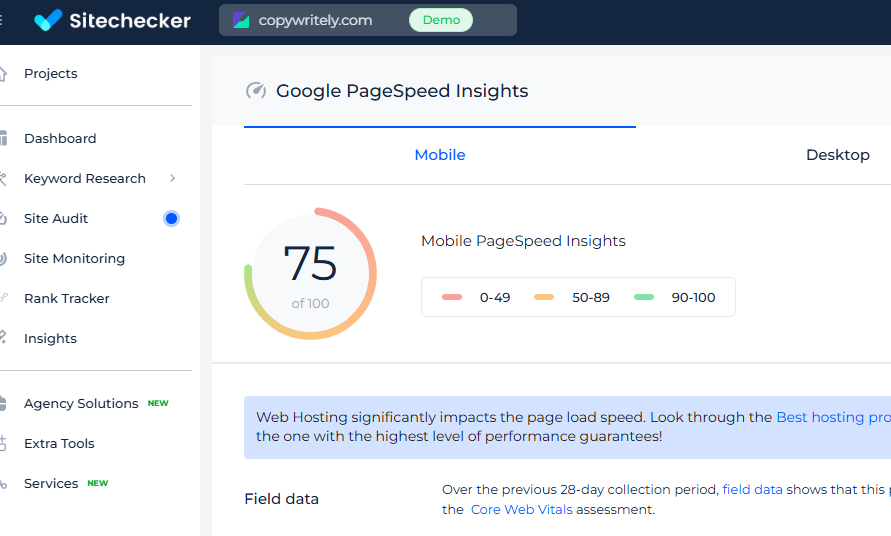
Even if your big stage set is amazing, if the smartphone set is disorganized or missing key features, your audience watching on their phones will have a poor experience or may not be interested in staying due to technical issues. And since most people are watching on phones, that matters most.
Optimization Tips in this new analogy:
- Responsive Design: Try to maintain a layout, size, and design that fits the big and small screens without losing key details.
- Speed Loading: If it takes too long for the scene to appear on their phone, they might get impatient and stop watching. Optimizing images and page which loads quickly on mobile can be click.
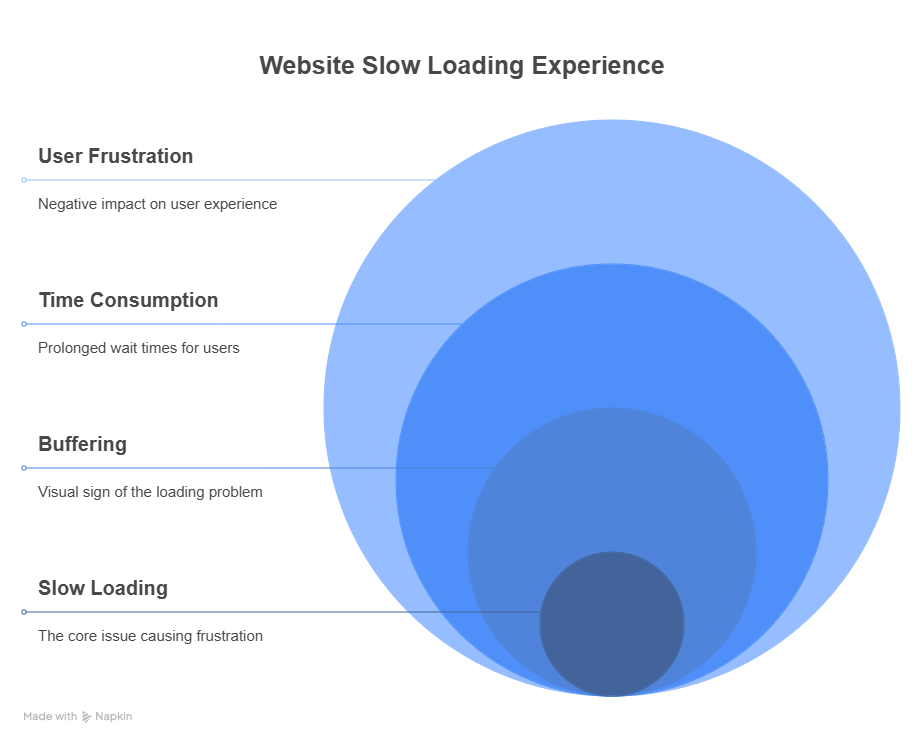
Let’s have an easy example:
Imagine you have an online clothing store. You have designed your website in such a way that user unable to open it or it is too much time to open and the images which you have added is not very clear or small in size, the click through button are also palced awkwardly, then the user quickly switch to another clothing store.
The above is an example of the same.
4. Page Experience and Core Web Vitals
Let’s assume you’re visiting a brand new amusement park. Your overall experience is how much you enjoy your entire visit, from the moment you enter until you leave.
In the same way when you entre a new page, google or some other search engine wants to know if people have a smooth and enjoyable time on your website.
Now, within this amusement park, there are a few key rides that Google pays extra attention to, calling them Core Web Vitals. These rides are like the most important parts of your website’s experience:
- Largest Contentful Paint (LCP):
- First Input Delay (FID):
- Cumulative Layout Shift (CLS): The “No Sudden Surprises Ride.”
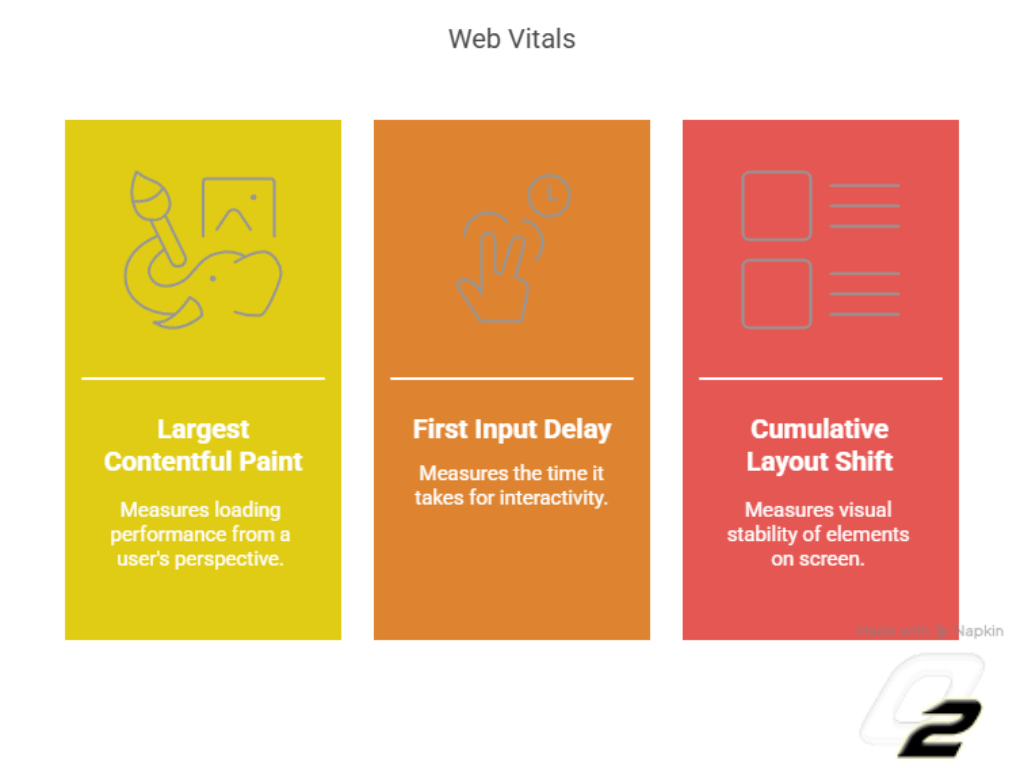
So, Google looks at these three “rides” (Core Web Vitals)—how fast people can get in, how easy it is to play, and whether they feel stable while doing it—to get a good idea of your overall “amusement park” experience (Page Experience). If these rides are smooth and enjoyable, people will likely have a good time on your website.
5. Backlinks and Link Building
Okay, let’s talk about “Backlinks and Link Building” and why they’re a big deal for how high your website appears in Google search results. Think of it like this:
Imagine different websites are like people, and a backlink is like one person recommending another person.
If a really well-known and respected person (a high-authority website) recommends your website to others by linking to it, it’s like a strong vote of confidence. Google sees these recommendations as important signals that your website has valuable and trustworthy information.

Note: In the above image Brainvire is proveding backlink to oxygen company.
Here’s a simple breakdown:
- Backlink: When another website puts a link on their page that takes you to your website. They say, “Hey, this website has something interesting you should check out!”
- Link Building: The process of getting other websites to link back to yours. It’s like trying to get those respected people to recommend you.
Why are backlinks so important for Search Engine Ranking?
Think of it as Google trying to figure out which websites are the most popular and trustworthy sources of information on a particular topic. If many other credible websites are linking to yours, it’s like many people are saying, “This website knows what it’s talking about!”‘
This tells Google that your website is likely a good resource and deserves to rank higher in the search results.
NOTE: Getting backlinks from high-quality and relevant websites is like getting strong recommendations. Strong recommandation will have good impact on search engines.
6. Technical SEO and Site Architecture
A well-structured website facilitates better crawling and indexing by search engines.Let’s explain technical SEO and site architecture using a completely different image.
Imagine Google is like a delivery company trying to pick up and deliver packages (your web pages) to people all over the world.
Simple Example:
Think of a big news website. They publish many articles every day. If their website has a clear URL structure (like www.xyznews.com/sports/football/todays-match) and an updated sitemap that tells Google about each new article, it’s much easier for Google to find and index all their stories quickly so people can see them in search results.

In short, Technical SEO and site Architecture are very important for any website to provide users a proper guide to visit which category or the user is looking for, which subject he is interested in.

7. On-Page SEO Optimisation
Optimizing individual pages enhances their visibility in search results. On-page seo includes title tags, meta description, keywords and Header tags like (H1, H2, H3, and H4).
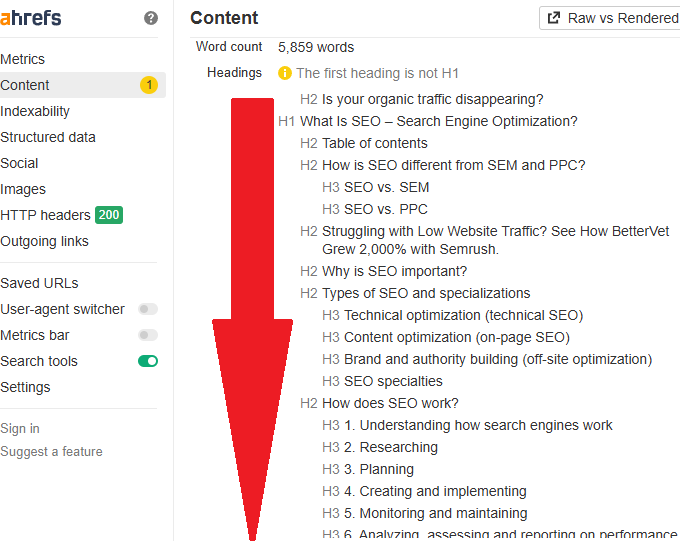
Think of a webpage like a helpful sign:
- Clear Heading: Tells you exactly what’s there.
- Short Description: Makes you want to read more.
- Organized Subheadings: Help you find what you need quickly.
8. User Engagement Signals
User behaviour metrics influence search rankings. CTR, Bounce rate and Dwell time this are some of the examples that i have tried, and the results are just great.
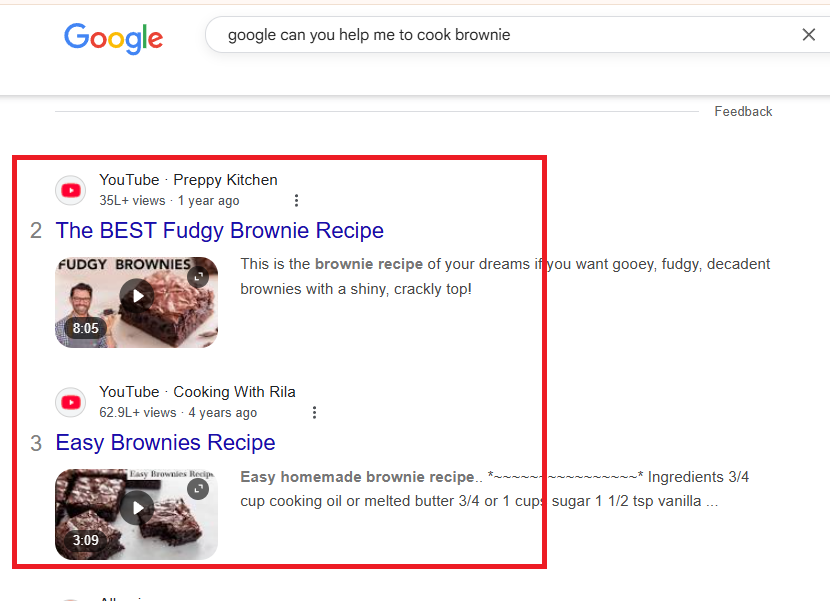
You can also use tutorial videos and images, which also help in the branding of your website.
9. Voice Search Optimization
Voice search optimization is now a days trending, most of the website have enable this feature in their website like voice search optimization and voice assistants.
Voice search offers hands-free convenience, especially while driving or cooking. It provides quick answers and streamlines information retrieval, making multitasking easier.
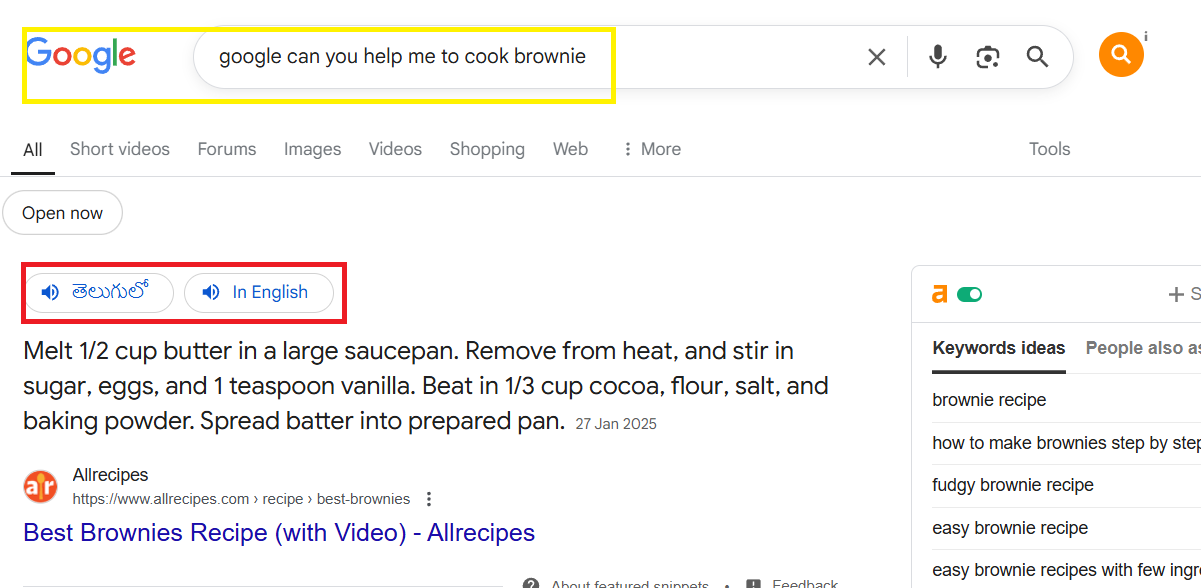
Many updated Divi theme provide this features, you can enable them.
Setting up voice search on your site is usually quick and requires just a few simple adjustments, and then it’s ready for voice commands!
Conclusion
A multidimensional strategy is needed to stay ahead of the curve in SEO, emphasizing user involvement, technological optimization, content quality, and flexibility in response to new trends.
You may improve your website’s visibility and attain long-term success in search engine rankings by placing the methods described in this tutorial into practice.
FAQ
FAQ 1: What is the most important ranking factor in SEO?
Content quality remains the most critical ranking factor. Search engine like (Google) sort fully infromative article, explained detailed, and provides relevant content that answers users’ queries.
FAQ 2: Should often we need to update my website content?
Updating website content in every 3 months is very important as it helps the users to update with latest or updated information. It also helps search engine to climb blog on top the searches and also improving your ranking in search. I personally recommand that updating the content is very important to stay top on search engines.
FAQ 3: Does optimizing for mobile affect search engine rankings?
It’s true that mobile optimization is essential. The mobile version of your website directly impacts rankings due to Google’s mobile-first indexing. Fast loading times, responsive designs, and easy-to-use navigation improve SEO performance and the mobile user experience.
FAQ 4: How do backlinks help in SEO?
Backlinks function like other websites’ endorsements. Search engines are alerted to the legitimacy of your material when reputable websites link to it. Quality backlinks improve your domain authority and can significantly enhance your visibility in search results.
FAQ 5: What is Google RankBrain, and why does it matter?
Google RankBrain is an AI system that helps process search queries. It evaluates how users interact with results, focusing on relevance and satisfaction. Optimizing for user intent and engagement ensures better alignment with RankBrain’s ranking logic.
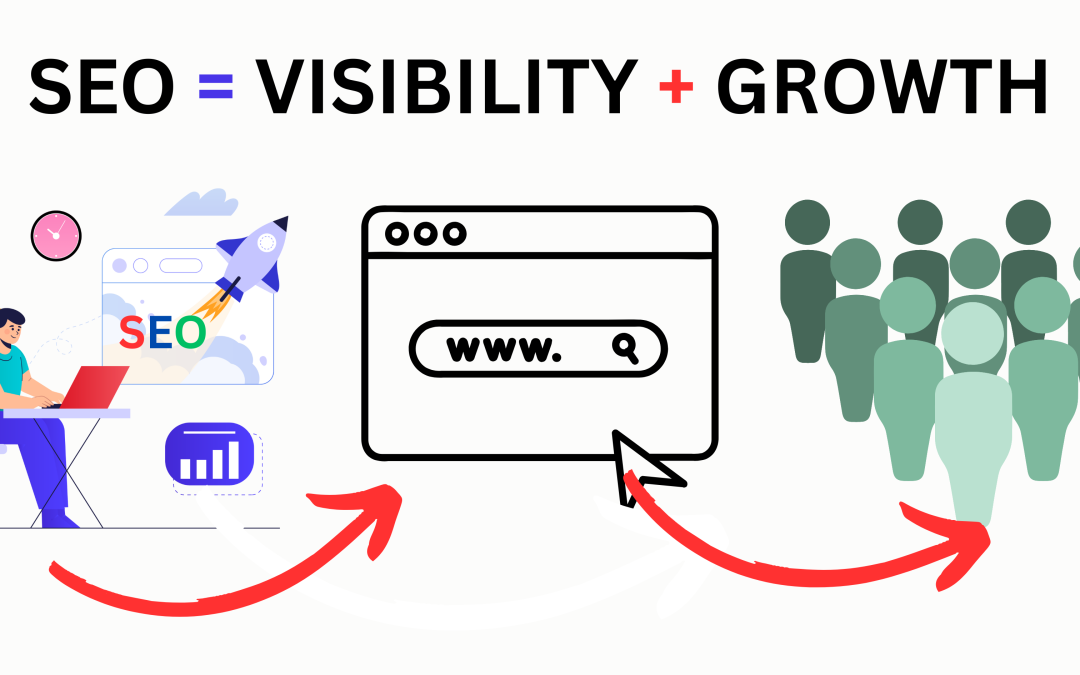
by Shashikanth Heerekar | May 6, 2025 | All Things about Marketing, SEO News, Technology
What Is SEO? Discover how SEO helps websites rank on Google. Here are easy tips for beginners to understand and apply SEO fast! Start learning now!
What is SEO (Search Engine Optimization)?
Search Engine Optimization, or SEO, is a method of improving a website’s visibility in search engine results pages (SERPs). It involves techniques and creative strategies to improve rankings, attract organic traffic, and increase the quality and quantity of visitors.
In other words, SEO services is also about increasing the standard and total website traffic. As you improve your position in search engines, you’ll likely get more visitors who may be engaged in your website, its products, or its content.
For the best explanation, we can use a real example. For instance, if you search for the term ‘best AC service providers’ on Google, Google will show you the top-ranking website for your keyword. Google shows these results for free, and the number of visitors coming through this is called organic traffic.
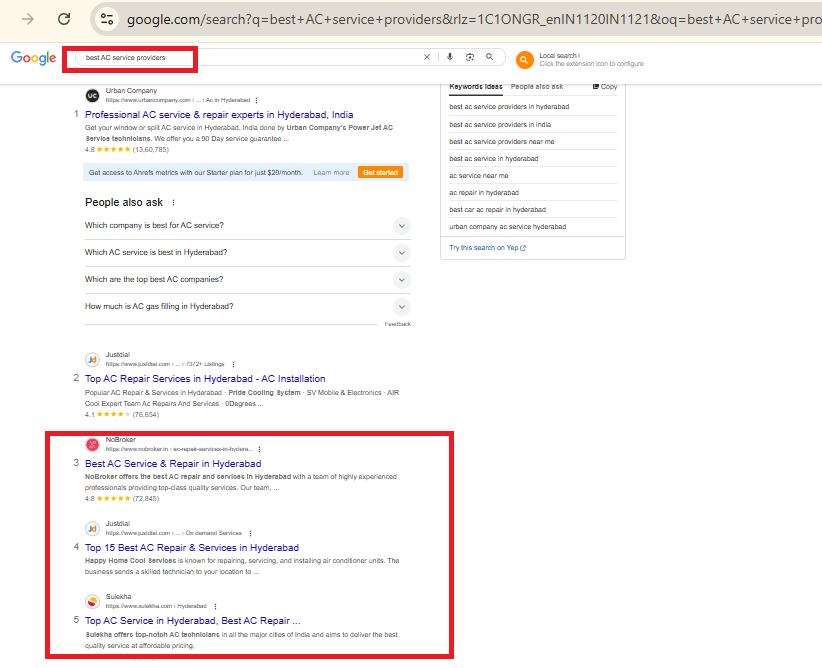
Why is SEO Important?
Catering to a Huge Audience
Most online approaches begin with a search engine. Ranking high means visibility in front of a wide, global audience actively searching for your products or services.
Low Cost of Implementation
Compared to paid advertising, SEO is cost-effective in the long run. You pay with time and effort upfront, but you can enjoy consistent traffic once you rank.
Staying Ahead of the Competition
Your competitors are investing in SEO. If you don’t, you’re handing them an advantage. SEO helps you stay relevant and ahead in a competitive online landscape.
Enhance User Experience
Good SEO practices improve user experience. You can please Google and your visitors by offering fast load speeds, mobile optimization, and easy navigation.
Builds Trust and Credibility
Sites that rank well are considered more trustworthy by users. Authority backlinks, quality content, and user-friendly design contribute to your reputation.
Data and Analysis
SEO provides valuable insight into user behaviour through tools like Google Analytics, Search Console, and Heatmaps.
How Does a Search Engine Work?
Search engine tools like Ecosia, Bing, StartPage, Google and DuckDuckGo are important systems that help users find accurate information quickly with accuracy. They follow a multi-step process that includes crawling, indexing, and ranking. Let’s break it down:
Crawling
Crawling is the first step in the process. Search engines send out automated bots known as crawlers or spiders to discover content across the web. These bots move from one page to another via links, collecting information such as:
- Page titles
- Meta tags
- Image alt texts
- Content structure
- Internal and external links
Search engines start with a known list of URLs (called a seed list) and, crawl those pages, then follow hyperlinks on those pages to discover new content. Crawling helps search engines discover which websites exist and what they contain.
✅ Example: Googlebot is Google’s main crawler. It continuously explores the internet, discovering new content and re-crawling updated pages. In the below as you can see, google has crawled and index your post.
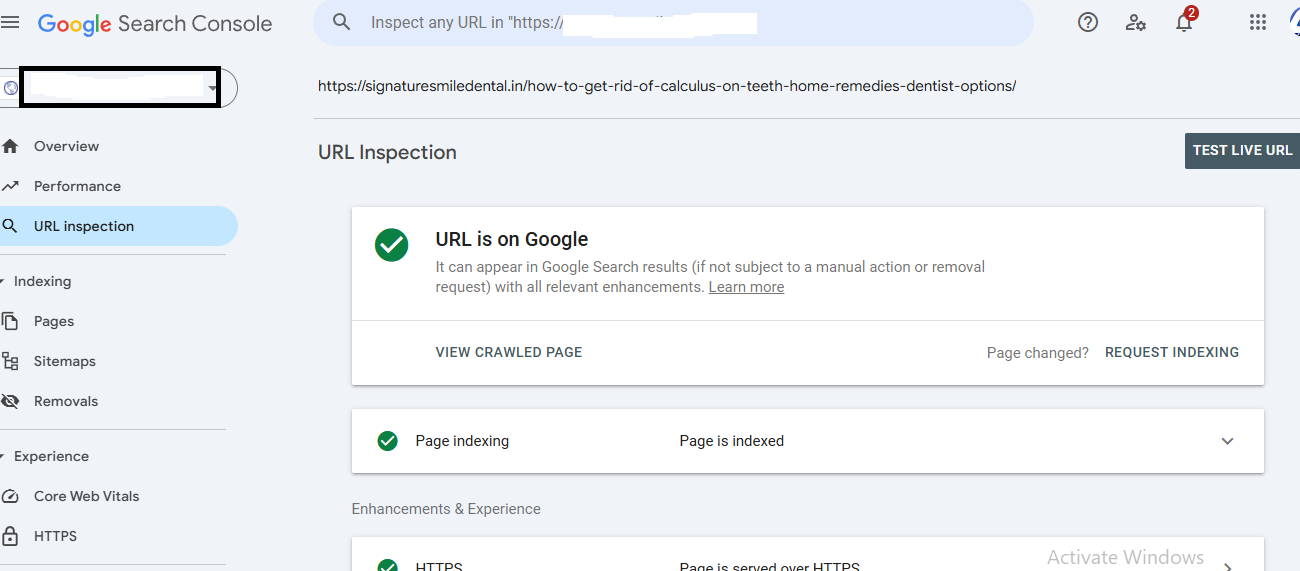
Indexing
Once the content is crawled, it needs to be understood and stored. This process is called indexing. The data collected by crawlers is organized and added to the search engine’s massive index — essentially a digital library of all known web pages.
During indexing, search engines analyze:
- Page content and topic
- Keywords and keyword context
- The freshness of the content
- Multimedia content like images or videos
- Page structure (HTML, headings, schema, etc.)
Search engines also use semantic indexing, which helps them understand the exact keyword and its context and intent.
⚠️ Note: If your page is not indexed, it won’t appear in search results — even if it’s well-designed or keyword-optimized. In the below image page is not index.
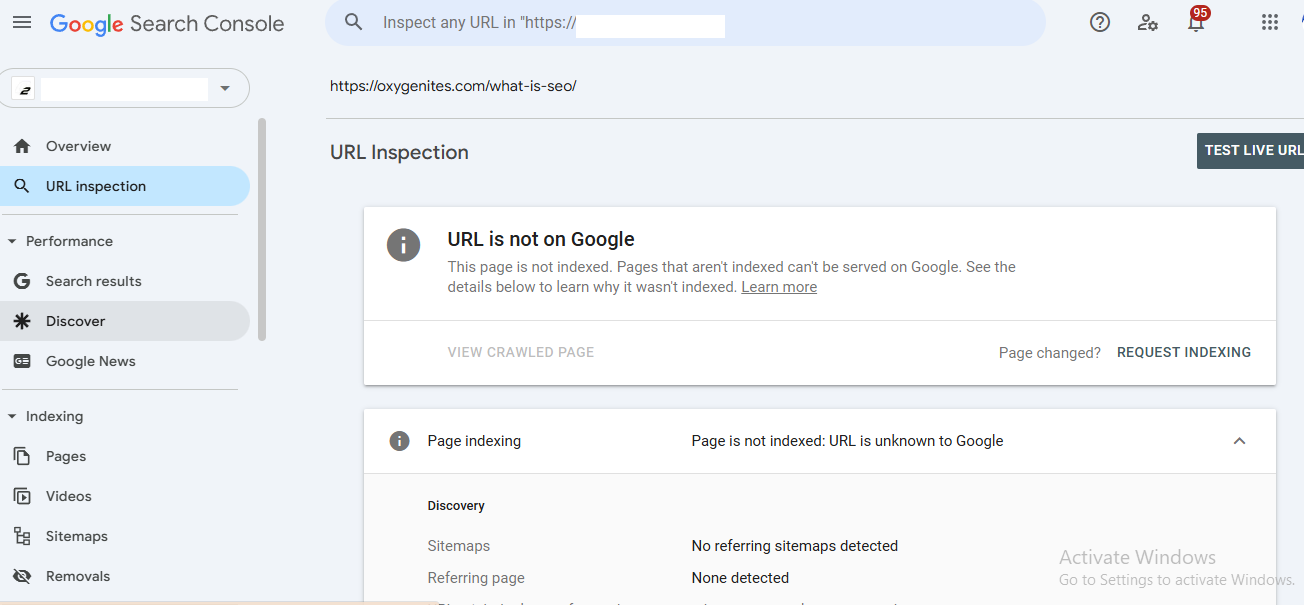
Ranking
When a user search a query into a search engine, it searches its index to find the most relevant pages. This is where the ranking algorithm comes into play.
The algorithm uses hundreds of ranking signals (Google has over 200) to evaluate and sort results. Tops of the most important ranking factors include:
- Keyword relevance
- Page authority (backlinks)
- Mobile-friendliness
- Page load speed
- Secure connection (HTTPS)
- User engagement signals (click-through rates, dwell time)
- Content quality and originality
Search engines try to match the user intent (informational, navigational, or transactional) with the most helpful and trustworthy pages. The goal is to show the best possible answer at the top of the search results.
How Do Search Engines Find Your Pages?
This tool helps you send a request to Google to crawl your website. You can also submit sitemaps for your site and monitor the number of submitted pages added to Google’s index and other details.

Why Sites Don’t Show Up in Search Results?
- Noindex tag present
- Poor content quality
- Blocked by robots.txt
- Lack of backlinks
- Penalty from algorithm updates
What is the Search Engine Algorithm?
Search engines use algorithms to decide the most relevant results for a query.
i. Analyze User Query
Search engines try to explain the intent behind a search query (informational, transactional, or navigational).
ii. Finding Matching Pages
The engine matches the query with indexed pages based on keywords, relevance, and authority.
Why Search Engines Sometimes Display Faulty/No Results?
This happens when the content doesn’t match user intent, is poorly optimized, or lacks authority.
How SEO Works?
SEO works by optimizing various website elements so search engines can explain their relevance and value to user queries. It starts with identifying what people are searching for—using keyword research—and then tailoring your website’s content, structure, and technical setup to target those search terms. By doing this, search engines are more likely to rank your pages higher, bringing in more organic traffic.
For example, run a bakery in Delhi and optimize your site with keywords like “best cakes in Delhi.“ Add quality content about your products, fast loading speed and mobile-friendliness. Google will find your site more valuable for people searching those terms. Over time, you may appear on the first page, attracting customers without paying for ads.
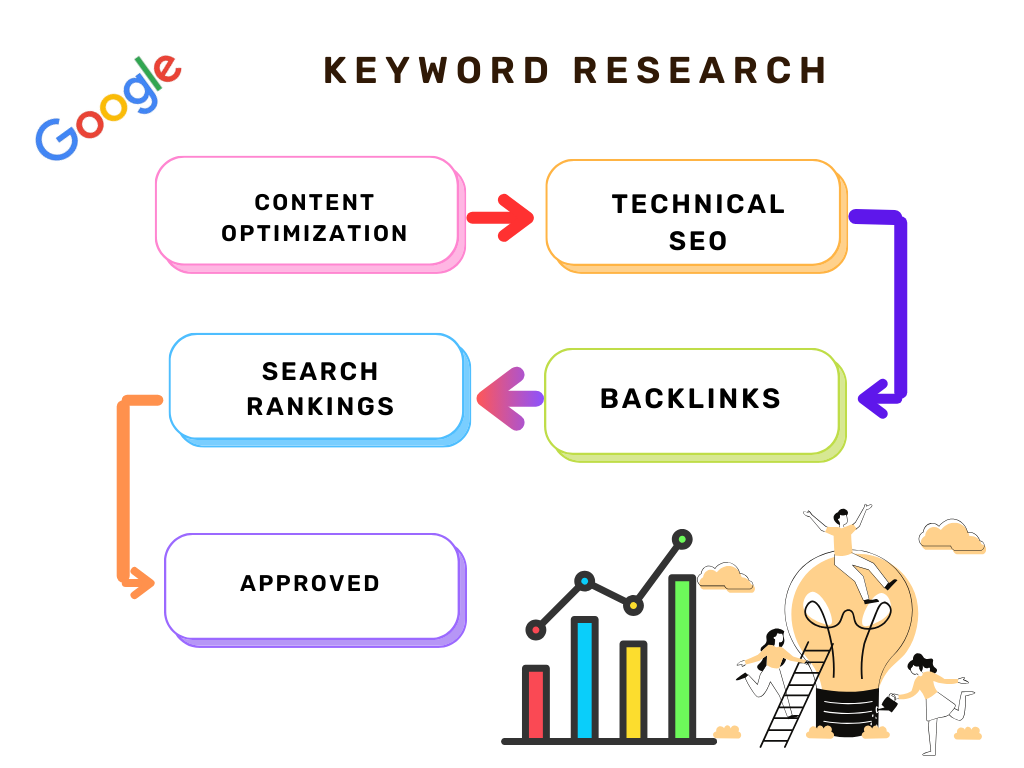
What are the Major Types of SEO?
On-Page SEO
Why is On-Page SEO Important?
It verifies that search engines recognize the content of your pages and rank them appropriately.
What are the Most Important On-Page Ranking Factors?
i) Title Tag Optimization
Use clear, concise titles with the primary keyword near the beginning.
ii) Meta Keywords and Meta Descriptions
Though meta keywords are outdated, a well-written meta description can increase CTR.
iii) Heading Tags
Organize content using H1, H2, H3 and H4 tags appropriately.
iv) Image Optimization and Interactive Media
Use alt text and descriptive file names, and reduce image size.
v) Engaging Content
Content should be unique, relevant, and answer the searcher’s query.
vi) Internal & External Links
Use links to guide users and spread link equity.
vii) Handle Duplicate Content
Use canonical tags and avoid duplicate pages to ensure search engines rank the correct version.
2. Technical SEO
Why is Technical SEO Important?
It provides that search engines can crawl, index, and rank your site effectively.
Technical SEO Best Practices
i) Website Speed
Improve loading times using caching, compression, and fast servers.
ii) Mobile-Friendliness
Responsive design is now a ranking factor. Use Google’s Mobile-Friendly Test.
iii) Site Architecture
Structure your site with a clear hierarchy and use breadcrumb navigation.
iv) Security
Use HTTPS to encrypt data and increase trust.
v) Structured Data Markup
Use schema to enhance search appearance with rich snippets.
vi) Create an XML Sitemap
The below given is an example of XML Site map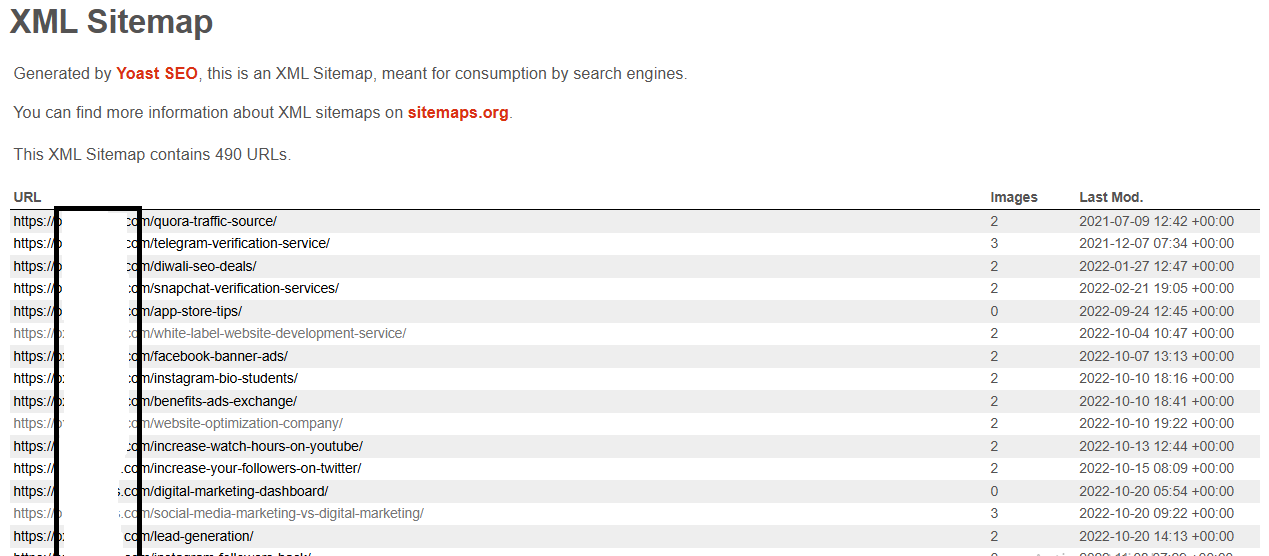 3. Off-Page SEO
3. Off-Page SEO
Why is Off-Page SEO Important?
It builds your site’s authority and trustworthiness.
Off-page Optimization Techniques
i) Quality Inbound Links
Get backlinks from sites with high domain authority(DA).
ii) Social Media Marketing
Share your content or blogs on social media platforms to increase visibility and backlinks.
iii) Content Marketing
Produce high-value blog posts, infographics, and videos.
iv) Localization and Citations
Ensure consistent business information across directories.
v) Email Marketing
Engage audiences and drive traffic to your optimized content.
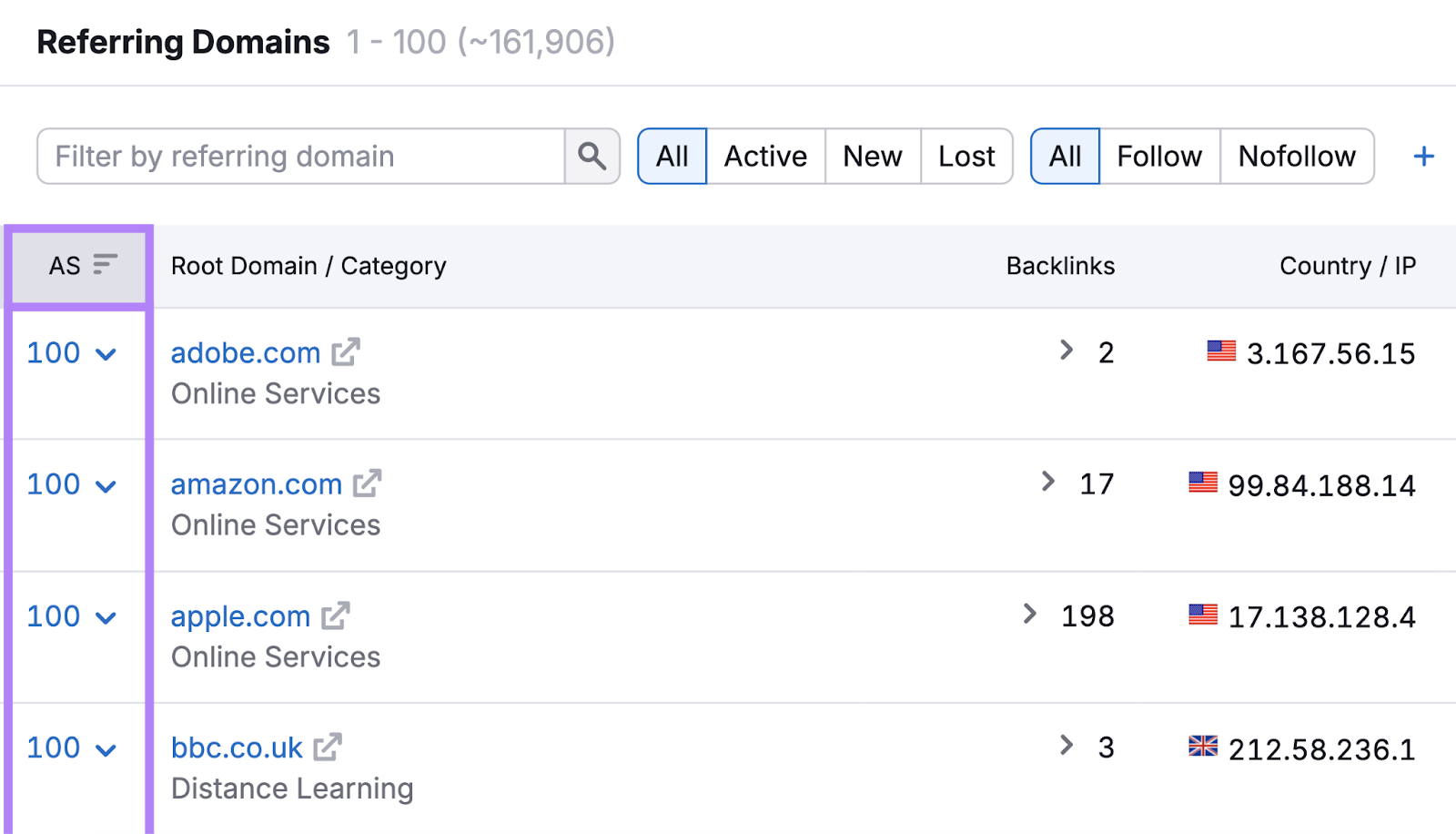
How do you do keyword research for SEO?
1. What is the role of Keyword research in SEO, and why does it play an important role?
Keyword research is one of the most important aspects of SEO because it directly impacts how well your content ranks on search engines. Acknowledging what your audience is searching for helps you create relevant and optimized content for those specific queries. By knowing the search intent that regular visitors are looking for, you can tailor your website’stciles, blogposts, and services pages to target those particular keywords.
It increases your organic traffic and ensures that the content you produce meets the needs and interests of your audience. For instance, if you’re running an online store that sells sneakers, performing keyword research can reveal terms like “best running shoes for flat feet“ or “affordable sneakers for men,“ which you can target in your content to increase visibility in search results and attract more customers.
The below is the example for top searches.
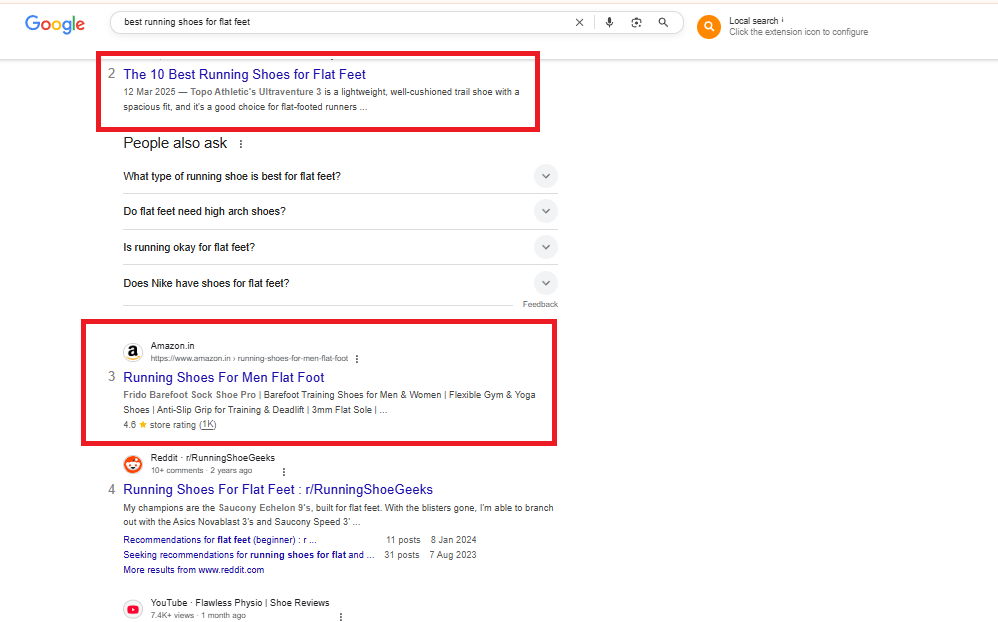
2. Brainstorming for Keywords
Brainstorming for keywords is the initial step in the keyword research process, and it involves thinking about your business, niche, and the potential questions your audience might have. Start by creating a list of broad topics related to your industry, products, or services. These could be things like “digital marketing,” “healthy eating,“ or “home improvement tips.“ Once you have a list of broad topics, you can break them down into more specific subtopics or long-tail keywords.
For example, from “digital marketing,“ you could narrow down to “SEO services,” “email marketing tips,“ or “social media strategies.“ This helps identify general and specific search intents that people might use when looking for solutions in your area of expertise.
3. What are some things to know before finding a suitable keyword? (Competitor’s Keywords Analysis)
It is important to find the most suitable keyword. It involves not only brainstorming but also analyzing your competition. By gathering your competitors’ keywords for which they are ranking, you can gain valuable insights into what works and which topics have significant search volume. Tools like Ahrefs, Semrush, and Moz allow you to analyze your competitors’ keyword strategies. You can enter their websites using these tools to see which keywords they rank for, how much traffic they’re receiving, and the difficulty level of ranking for these terms.
For example, if you find that your competitor’s blog is ranking for the keyword “best-running shoes for long-distance runners,” this could indicate high interest in this topic. You can use this information to target the same or similar keywords in your content, adjusting your approach to make it more compelling or detailed to improve your chances of outranking them.
Competitor analysis gives you a competitive edge and can highlight keyword opportunities that you might not have considered otherwise.
The below image shows you the competitor’s keywords which we can include in your article.

4. How to Choose the Best Keyword?
i) Long-tail Keywords:
Less competition and more targeted traffic.
ii) Latent-Semantic Indexing (LSI) Keywords:
Related terms that support the main keyword.
iii) Follow Recent Trends:
Stay updated using Google Trends.
iv) Location-Based Keywords:
Useful for local SEO (e.g., “plumber in Miami”).
5. Keyword Research Tools
i) Google Trends
ii) Google Keyword Planner
iii) Semrush
iv) Soovle
v) Ubersuggest
Emerging Trends in SEO in 2025
1. Artificial Intelligence in SEO
AI is transforming keyword research, content creation, and competitor analysis.
2. Google’s EEAT Factors
Experience, Expertise, Authoritativeness, and Trustworthiness matter more than ever.
3. Core Web Vitals for Enhanced Ranking
Focus on LCP, FID, and CLS for performance.
Quick Tips to Improve Core Web Vitals
- Use fast hosting
- Compress media
- Defer JavaScript
Practical Guide to Improving Your Website’s SEO in 2025
1. Using AI for SEO
i) AI-Powered Keyword Research
Use AI tools to uncover opportunities faster.
ii) Understanding Search Intent with AI
Analyze what users want to see.
iii) On-page Optimization with AI
Optimize content layout and structure using smart suggestions.
iv) Competitive Analysis
Track competitors’ moves in real-time.
v) Facilitating Content Creation
Generate outlines and FAQs and draft content using AI.
2. Doing SEO Yourself
- Use Google Search Console
- Follow on-page and technical SEO best result
- Build relationships for backlinks
Conclusion
SEO in 2025 requires a mixture of solid fundamentals, awareness of emerging trends, and smart implementation. You can secure your place in Google’s top ranking by aiming at valuable content, user experience, and your site’s technical health.
FAQs
Q1: How long does SEO take to show results?
A: Typically, it is 3–6 months, depending on competition and effort.
Q2: Is SEO better than PPC?
A: SEO brings long-term results, while PPC is immediate. Both have their place.
Q3: Can I do SEO without coding?
A: Yes, many SEO tasks can be completed without coding skills.
Q4: How often should I update SEO content?
A: Update every 3–6 months or when major algorithm updates occur.
Q5: What’s the best free SEO tool?
A: Google Search Console and Google Keyword Planner are excellent free tools.
Q6: What are the latest Google SEO trends in 2025?
A: In 2025, Google emphasizes EEAT (Experience, Expertise, Authoritativeness, Trustworthiness), Core Web Vitals, mobile optimization, and AI-generated helpful content. Following ethical white hat practices and optimizing user experience is crucial to maintaining or improving rankings in search results.
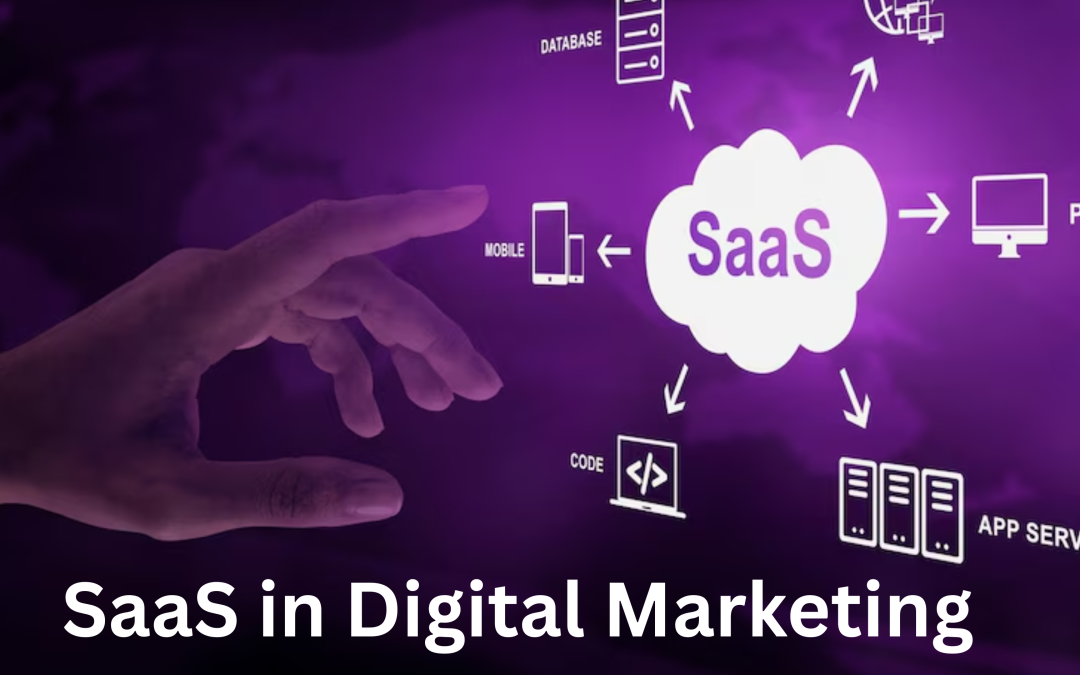
by Shashikanth Heerekar | Mar 29, 2025 | All Things about Marketing, SEO News, Technology
Unlock the full potential of SaaS in digital marketing. Our ultimate guide covers everything from the basics to advanced strategies for using SaaS to automate, optimize, and amplify your marketing efforts.
Introduction
In today’s fast-paced digital world, SaaS digital marketing is essential for businesses looking to scale efficiently. With the right digital marketing strategy for SaaS, companies can automate tasks, improve customer engagement, and boost ROI. SaaS digital marketing strategy focuses on leveraging cloud-based tools to streamline operations. The demand for digital marketing for SaaS companies is growing rapidly, making it crucial for businesses to adapt.
From automation to analytics, SaaS digital marketing simplifies complex marketing processes. If you’re in digital SaaS, understanding its impact can give you a competitive edge. Let’s explore how the SaaS digital marketing strategy is transforming the industry.
How SaaS is Transforming Digital Marketing
1. Automation & Efficiency
One of the biggest advantages of digital SaaS is automation, which allows businesses to save time and resources. With the right SaaS digital marketing strategy, companies can automate tasks like email campaigns, social media posts, and lead nurturing. Digital marketing for SaaS companies benefits from tools like Mailchimp, ActiveCampaign, and HubSpot for customer engagement.
Social media automation tools such as Buffer and Hootsuite make social media marketing for SaaS seamless. CRM software like Salesforce helps track customer interactions efficiently. What’s more, many SaaS platforms can also automate document processing, streamlining workflows for contracts, reports, and other marketing materials. This level of automation improves consistency and enhances customer experience.
2. Data-Driven Decision Making
A strong SaaS digital marketing strategy is built on data, helping businesses make informed decisions. Analytics tools like Google Analytics, Ahrefs, and SEMrush empower digital marketing for SaaS companies with deep insights.Additionally, SaaS conversion tracking enables businesses to measure key actions, like free trial sign-ups, user registrations, or purchases, offering a precise view of campaign effectiveness.
AI-powered platforms enhance SaaS performance marketing by predicting customer behavior and trends. Digital marketing for SaaS companies relies on real-time data to optimize campaigns and maximize ROI.
By analyzing performance metrics, businesses can refine their digital marketing strategy for SaaS. SaaS platforms provide automated reports, making data analysis quick and accurate. Implementing a SaaS digital marketing strategy ensures continuous improvement and better marketing outcomes.
3. Cost-Effectiveness & Scalability
Unlike traditional marketing, SaaS digital marketing offers cost-effective solutions that grow with your business. With subscription-based pricing, SaaS companies can access premium tools without large upfront investments. Cloud-based platforms ensure businesses only pay for what they use, improving financial efficiency. Additionally, cloud cost monitoring tools provide real-time insights, helping companies track and optimize their cloud usage to further reduce unnecessary expenses.”
A well-planned digital marketing strategy for SaaS allows for scalable marketing efforts as businesses expand. Companies can easily upgrade or downgrade their SaaS digital marketing plans based on their needs.
This flexibility makes marketing digital SaaS an ideal choice for startups and enterprises alike. Scalability ensures that the SaaS digital marketing strategy evolves with industry trends and market demands.
Top SaaS Tools for Digital Marketing
1. SEO & Content Marketing Tools
SEO is a fundamental part of SaaS digital marketing, helping businesses rank higher on search engines. Ahrefs and SEMrush provide keyword insights crucial for a strong digital marketing strategy for SaaS. SurferSEO optimizes content structure, enhancing digital marketing for SaaS companies. Moz and Ubersuggest are also useful for competitive analysis in SaaS digital marketing.
AI-driven tools generate content ideas, making SaaS performance marketing more effective. These platforms automate keyword tracking, improving digital marketing for SaaS. Using SEO tools effectively is key to a successful SaaS digital marketing strategy.
2. Email Marketing Platforms
A robust SaaS digital marketing strategy includes email automation to nurture leads and retain customers. Mailchimp offers AI-driven personalization, enhancing digital marketing for SaaS companies. ConvertKit specializes in audience segmentation, improving SaaS performance marketing. ActiveCampaign integrates with CRM, making it ideal for SaaS digital marketing. Automated email sequences streamline communication, strengthening digital marketing for SaaS engagement.
Real-time analytics help measure the effectiveness of SaaS digital marketing strategy campaigns. A well-structured email marketing strategy is a crucial part of marketing digital SaaS success.
3. Social Media Management Tools
Social media is essential for SaaS digital marketing, helping brands build visibility and engagement. Buffer schedules posts across multiple platforms, optimizing social media marketing for SaaS efforts. Hootsuite provides analytics that enhance SaaS performance marketing strategies.
Sprout Social allows businesses to monitor audience interactions, improving SaaS digital marketing engagement. AI-powered tools like Lately repurpose content, making digital marketing for SaaS more efficient.Businesses use automation and tools like a social media post maker to maintain consistent social media presence in SaaS digital marketing strategy.
4. Customer Relationship Management (CRM)
CRM software plays a key role in SaaS digital marketing, helping manage customer relationships. HubSpot CRM automates sales and marketing efforts, strengthening digital marketing for SaaS companies. Salesforce offers AI-powered analytics, optimizing SaaS performance marketing. Zoho CRM integrates seamlessly with email marketing, enhancing the SaaS digital marketing strategy.
Personalization tools in CRM platforms improve SaaS customer marketing effectiveness. Automated workflows ensure businesses provide timely support in digital marketing for SaaS. A well-implemented CRM system is crucial for long-term SaaS digital marketing success.
Challenges of Using SaaS in Digital Marketing
1. Data Security & Privacy
Despite its advantages, SaaS digital marketing faces security risks that businesses must address. Data breaches can impact digital marketing for SaaS companies, leading to compliance issues. Secure cloud storage solutions are essential for protecting sensitive SaaS digital marketing data. Companies must follow data protection laws while implementing SaaS performance marketing strategies low- code platforms.
AI-driven cybersecurity measures help strengthen digital marketing for SaaS security. Regular security audits minimize vulnerabilities in SaaS digital marketing strategy execution. Implementing strong security protocols ensures safe marketing digital SaaS operations.
2. Integration Issues with Other Tools
Many businesses struggle with tool integration in SaaS digital marketing, affecting workflow efficiency. CRM, SEO, and social media platforms must sync for an effective SaaS digital marketing strategy. API compatibility plays a crucial role in seamless digital marketing for SaaS companies’ operations. iPaaS solutions support these integrations by providing a unified approach to connecting diverse tools.Cloud-based automation tools help bridge gaps in SaaS digital marketing systems. Businesses must invest in platforms with flexible integrations for smooth SaaS performance marketing.
AI-driven solutions help resolve compatibility issues in marketing digital SaaS strategies. A strong integration plan ensures optimized SaaS digital marketing strategy execution.
SaaS link building services play a vital role in boosting domain authority and driving organic traffic. By securing high-quality backlinks, these services enhance the visibility and credibility of SaaS platforms in competitive markets.
Future of SaaS in Digital Marketing
The future of SaaS digital marketing is shaped by AI, automation, and data analytics. AI-driven insights will refine SaaS performance marketing, leading to smarter campaigns. No-code and low-code platforms will simplify digital marketing for SaaS companies operations. Personalization will become a core part of SaaS digital marketing strategy.
Predictive analytics will enhance decision-making in digital SaaS campaigns. Augmented reality (AR) will redefine engagement strategies in SaaS digital marketing. Businesses must adopt emerging trends to stay ahead in digital marketing for SaaS.
Conclusion
A strong digital marketing strategy for SaaS is key to achieving business growth and success. Leveraging the right SaaS digital marketing tools helps companies scale operations efficiently. Automation, AI, and data-driven insights drive success in digital marketing for SaaS companies. Businesses must focus on personalization and integration to enhance SaaS performance marketing.
Social media and CRM strategies play a crucial role in SaaS digital marketing strategy. Staying updated with trends ensures a competitive edge in marketing digital SaaS. Implementing an effective SaaS digital marketing strategy is essential for long-term business success.
Frequently Asked Questions (FAQs)
1. What is SaaS digital marketing?
SaaS digital marketing refers to the strategies and techniques used to promote Software-as-a-Service (SaaS) products online. One of the most performance-driven approaches is ppc for saas, which allows for precise targeting and measurable results. It includes SEO, content marketing, PPC, email marketing, social media marketing for SaaS, and more. A strong digital marketing strategy for SaaS helps in customer acquisition, retention, and brand awareness.
2. How is digital marketing for SaaS different from traditional marketing?
Unlike traditional marketing, SaaS digital marketing is data-driven, highly scalable, and focuses on recurring revenue models. It includes SaaS performance marketing, customer retention strategies, and subscription-based growth tactics. Digital marketing for SaaS companies relies heavily on automation, analytics, and inbound marketing techniques.
3. What are the best SaaS digital marketing strategies?
Some of the most effective SaaS digital marketing strategies include SEO, PPC advertising, content marketing, email automation, and social media marketing for SaaS. Businesses should focus on SaaS performance marketing, lead nurturing, and data-driven decision-making for better ROI.
4. Which tools are best for SaaS digital marketing?
There are many tools available for SaaS digital marketing, depending on the marketing goals. SEO tools like Ahrefs and SEMrush, email marketing tools like Mailchimp and ActiveCampaign, CRM platforms like HubSpot and Salesforce, and social media marketing for SaaS tools like Buffer and Hootsuite are some of the best options.
5. How can SaaS companies improve their digital marketing performance?
To improve SaaS digital marketing performance, businesses should focus on audience segmentation, personalization, and data analytics. Using SaaS digital marketing strategy, they can optimize their campaigns, improve conversion rates, and enhance customer engagement. Regularly tracking metrics and refining marketing tactics are key to success in digital marketing for SaaS companies.
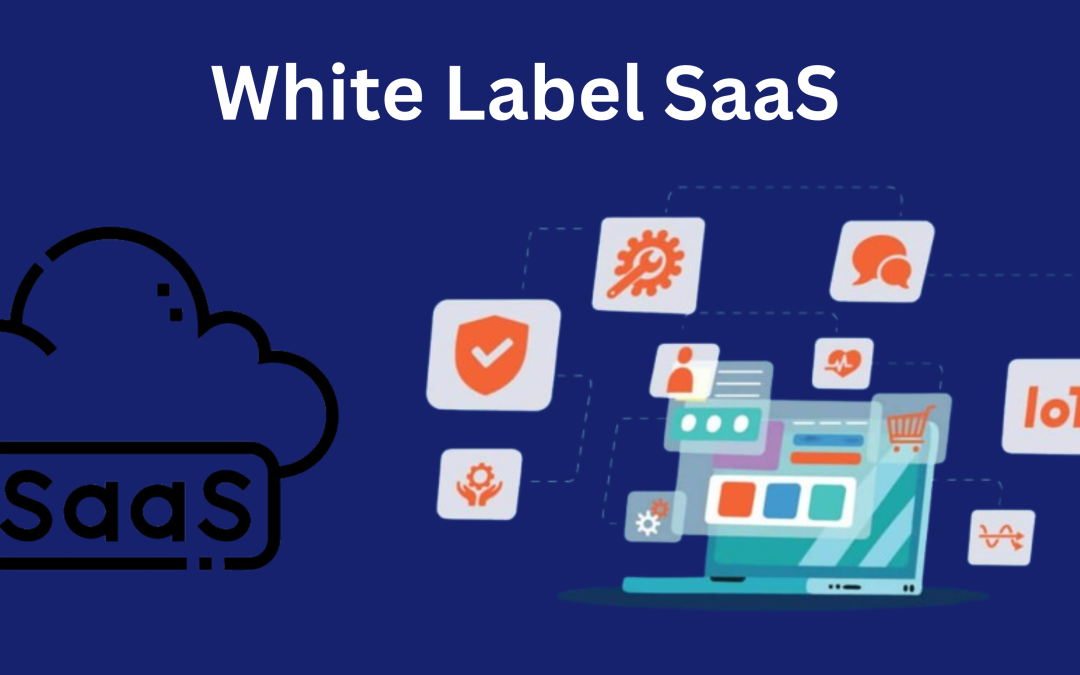
by Shashikanth Heerekar | Mar 22, 2025 | SEO News, Technology
Discover the advantages of white-label SaaS products, including cost efficiency, ease of customization, and the ability to resell solutions like CRM, e-commerce, and more.
Introduction
In software as a service (SaaS), white-label SaaS is becoming an increasingly popular business model. White-label software allows companies to sell a product or service under their brand name, even though another company developed it. This guide will explore what white-label SaaS is, how it works, its benefits, and how businesses can leverage it to grow and scale.
What is White Label SaaS?
White-label SaaS refers to cloud-based software products created by one company but sold and branded by another. The term “white label” refers to removing any identifying brand information, leaving a blank label that can be customized with a new brand. White labelling allows businesses to offer software solutions without investing the time, resources, and effort needed to develop those solutions from scratch.
In the case of white-label software, the core features, functionalities, and technology are built by the software provider. However, the reseller or the business offering the software can rebrand and market it as their own. SaaS white-label solutions are designed to be easily integrated into different business models, offering scalability, flexibility, and cost-effectiveness.
How Does White Label SaaS Work?
White-label SaaS allows businesses to rebrand an existing software solution and offer it to their customers as if it were their product. These companies (often referred to as white-label resellers) can choose to add their logo, modify user interfaces, and adjust branding elements to fit their business’s identity.
For example, a company may sell a white-label CRM software solution developed by another company. The software will function the same way for all users, but it will display the reseller’s branding, creating a seamless experience for their customers. The reseller doesn’t need to worry about software development, hosting, or maintenance complexities. The software provider handles all these aspects.
White Label SaaS vs Private Label SaaS
While white-label and private-label SaaS are often used interchangeably, there are subtle differences. Private-label software typically involves more customization options than white-label software, usually allowing the reseller to make deeper modifications to the source code, which gives them more control over the product.
On the other hand, white-label software is typically less customizable. Resellers are more restricted in how much they can change, but the focus remains on offering a turnkey solution that is easy to implement, maintain, and sell.
Benefits of White Label SaaS
There are several reasons why white-label SaaS is a popular choice for many businesses. Let’s examine a few of the most convincing advantages:
1. Cost Efficiency
One of the biggest advantages of white-label SaaS is the cost savings. Developing software from scratch can be expensive, especially considering development, testing, support, and maintenance costs. By reselling white-label SaaS products, businesses can skip the development phase and start selling immediately.
2. Speed to Market
With white-label programs, businesses can quickly bring new software solutions to market. Instead of spending months or years building a product, they can take a ready-made software solution, add their branding, and offer it to customers immediately.
3. Scalability
White-label SaaS products are typically designed to scale with businesses. Whether you’re selling to a small group of clients or thousands of users, the software can grow with your business. This scalability makes white-label SaaS an attractive option for companies that want to expand without the complexity of managing the backend infrastructure.
4. Focus on Core Competencies
For businesses that aren’t focused on software development, white-label SaaS allows them to concentrate on their core competencies. They can focus on sales, marketing, and customer support, leaving the technical side to the original software provider. This helps them stay competitive in their respective industries without mastering the complexities of software development.
5. Customization and Branding
While white-label software often comes with predefined features, there is still plenty of room for customization, especially in branding and user interface. Businesses can make the software feel like part of their suite of products, providing a seamless experience for customers.
This flexibility is particularly beneficial for industries like spa services, where innovative software solutions for spas enable seamless customization of booking systems, loyalty programs, and client management tools, resulting in an enhanced and personalized customer experience.
6. No Need for Technical Expertise
Since the white-label SaaS provider manages the software’s development and maintenance, resellers don’t need technical expertise to sell and support it. This is ideal for non-technical businesses looking to diversify their offerings.
Types of White Label SaaS Solutions
White-label SaaS solutions can be found in various industries and offer different services. Here are a few examples:
1. White Label CRM Software
Customer Relationship Management (CRM) software is among the most popular white-label SaaS products. Businesses can offer CRM tools under their branding to help clients manage leads, track interactions, and automate workflows. This is a great option for businesses in sales, marketing, and customer service.
2. White Label Real Estate Software
Real estate agents and agencies can benefit from white-label software to manage listings, track property sales, and connect with clients. It allows them to offer a fully branded digital experience without building a product from scratch. When paired with a real estate CRM software, it creates a complete ecosystem where agents can capture leads, nurture prospects, and manage every client interaction from one unified workspace.
3. White Label Project Management Software
Project management software is another common white-label solution. Companies can offer clients project management tools that allow teams to collaborate, track progress, and manage tasks and deadlines.
4. White Label E-commerce Software
E-commerce businesses can take advantage of white-label SaaS platforms designed for online stores. These platforms offer ready-to-use shopping cart solutions, inventory management, and payment processing, allowing e-commerce businesses to focus on sales and marketing.
5. White Label Communication and Collaboration Tools
Communication platforms, from white-label chat software to video conferencing tools, are in high demand. Resellers can offer these products with branding, providing businesses with communication solutions without developing them in-house.
How to Become a White-Label SaaS Reseller
Becoming a white-label SaaS reseller can be a profitable business model, but it’s essential to understand how to get started. Here’s a step-by-step guide:
Step 1: Identify the Right White Label SaaS Product
The first step is to choose a white-label SaaS product that aligns with your business’s goals and target market. Look for products that have a proven track record, offer good customer support, and are scalable. If you’re targeting service-oriented industries or agencies, look for white-label
project portals that clients actually use, such as Wrike’s client collaboration tools, which have become benchmarks for usability and transparency.
Step 2: Partner with a Reliable White Label Provider
Once you’ve chosen a product, the next step is to find a white-label SaaS provider. Research and evaluate providers based on their reputation, reliability, and support for resellers.
Step 3: Rebrand and Customize the Software
After partnering with the provider, the next step is to rebrand the software. This involves adding your company’s logo, choosing colour schemes, and customizing any available options to make the software reflect your brand identity.
Step 4: Market and Sell the Product
Once the software is rebranded, you can start marketing and selling it to your customers. Focus on the product’s unique value proposition and how it can solve specific problems for your target audience.
Step 5: Provide Ongoing Support
While the software provider handles the technical side, you will still be responsible for customer support. Ensure your team is ready to assist customers with any issues or questions.
Popular White Label SaaS Providers
Numerous white-label SaaS companies offer products across various industries. Some popular white-label software companies include:
- Zoho: Offers a variety of white-label SaaS solutions ranging from CRM software to accounting tools.
- Shopify: A leader in e-commerce platforms, Shopify offers a white-label SaaS platform for resellers in online retail.
- Freshdesk: Offers a white-label customer support solution, ideal for businesses looking to improve customer service.
- Trello: A popular project management tool that can be white-labelled for companies needing customizable task management solutions.
White Label SaaS Reseller Programs
For businesses looking to get into the white-label SaaS business, joining a white-label reseller program can be an excellent opportunity. These programs typically offer:
- Training and resources to help you sell the product.
- Marketing materials and support.
- Commission or profit-sharing models.
- Ongoing technical support from the software provider.
Conclusion
White-label SaaS offers a compelling opportunity for businesses to expand their product offerings without developing software in-house.
White-label SaaS offers a compelling opportunity for businesses to expand their product offerings without developing software in-house. Whether you aim to deliver CRM solutions, develop industry-specific platforms, or offer advanced, tailored solutions to meet different business needs, white-label software can be a strategic way to expand your product line. These ready-made solutions enable you to enter new markets faster, reduce development time, and maintain your brand identity while offering high-value services.
By leveraging the power of white-label programs, businesses can focus on growing their customer base while the SaaS provider handles the technical aspects. With the right partner and strategy, you can build a successful white-label SaaS business and offer valuable solutions to your clients.
FAQS
1. What is White Label SaaS?
A. White-label SaaS refers to software products developed by one company but rebranded and sold by another company under its name. This allows businesses to offer ready-made solutions without having to create them in-house.
2. How Does White Label SaaS Work?
A. White-label SaaS allows businesses to purchase a pre-built software product, rebrand it with their logo, and sell it as if it were their product. The underlying software provider handles development, maintenance, and updates.
3. How Can I Become a White Label SaaS Reseller?
A. To become a white-label SaaS reseller, you must choose a software provider, sign up for a reseller program, rebrand the product to reflect your business, and then market and sell the solution to your target customers.
4. What’s the Difference Between White and Private Label SaaS?
A. White-label SaaS typically offers less customization. It focuses on reselling a product with your branding, while private label SaaS allows more customization, often including modifications to the software’s core features.
5. What is the Profit Potential of White Label SaaS?
A. The profit potential depends on your reselling software, pricing model, and marketing efforts. As a white-label SaaS reseller, you can earn through direct sales, recurring revenue, or profit-sharing agreements with the software provider.
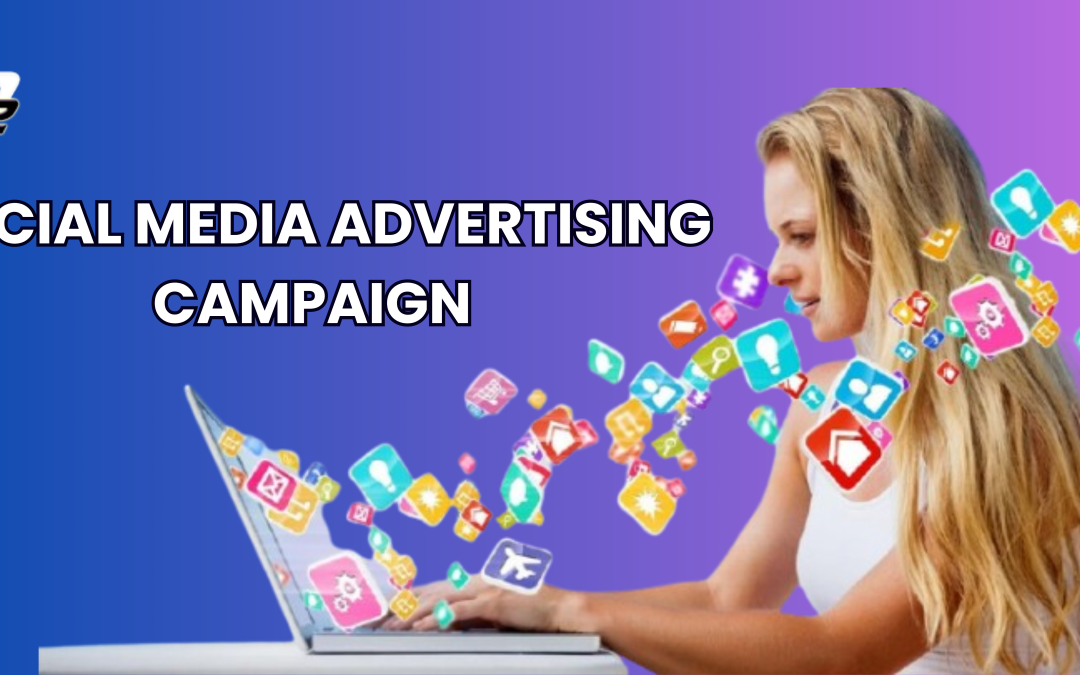
by Shashikanth Heerekar | Feb 8, 2025 | Technology
Take your social media marketing to the next level with our beginner’s guide to social media advertising campaigns. Learn how to create, launch, and optimize your ads for success.
Introduction
Social media advertising campaigns have revolutionized the way businesses connect with their audience. With billions of users active daily on platforms like Facebook, Instagram, Twitter, LinkedIn, and TikTok, companies now have the opportunity to target customers with precision. Whether you’re a small business or a large enterprise, an effective social media advertising campaign can drive brand awareness, engagement, and conversions. In this guide, we’ll explore everything you need to know to launch a successful campaign.
What is a Social Media Advertising Campaign?
Definition and Purpose
A social media advertising campaign is a targeted marketing strategy that uses paid ads on platforms like Facebook, Instagram, or LinkedIn to achieve specific business goals. These campaigns, aligned with the social strategy definition, aim to expand reach, drive engagement, and convert audiences into customers. Unlike organic posts, paid ads allow businesses to target specific demographics, interests, and behaviours, reflecting the target marketing mix.
The purpose is to boost brand visibility, generate leads, or increase sales, leveraging social marketing benefits and addressing current issues of marketing. It’s a cost-effective way to connect with a larger, more relevant audience while considering social issues of advertising and the societal marketing concept.

by Shashikanth Heerekar | Feb 1, 2025 | Technology
Social media brand marketing has become the cornerstone of successful business strategies in today’s digital landscape. This comprehensive guide explores how businesses can leverage social platforms to build strong, lasting brand identities and meaningful connections with their audience.
Understanding Social Media Branding
Social media branding is the process of establishing and maintaining a unique brand identity across digital platforms. It involves a strategic combination of visual design, messaging, and audience engagement to create a consistent and memorable brand experience. In today’s digital world, where 90% of consumers engage with brands online before making purchasing decisions, a well-defined social media branding strategy is essential for success. Businesses that invest in strong branding build trust increase visibility and cultivate loyal communities. Below are key components of social media branding that businesses should focus on.
Brand Identity: Your Unique Visual and Verbal Presence Across Platforms
A strong brand identity ensures that your business is instantly recognizable across all social media channels. This includes your logo, colour palette, typography, and brand voice, which should remain consistent across platforms. Whether you aim for a professional, fun, or innovative tone, your messaging should reflect your brand’s core values. Visual elements like profile pictures, cover images, and post aesthetics should align with your overall branding to create a seamless experience. A well-crafted brand identity differentiates you from competitors and helps build lasting impressions with your audience. Consider utilising an AI logo generator to maintain a unified brand image across all online platforms.
For example, brands like Nike and Coca-Cola have mastered the art of visual and verbal consistency. Their logos, colours, and messaging are instantly recognizable, creating a strong emotional connection with their audience.
Customer Engagement: Direct Interaction with Your Target Audience
Engaging directly with your audience is crucial for building relationships and strengthening brand loyalty. Social media provides an interactive platform where businesses can respond to comments, answer queries, and acknowledge feedback in real-time. Hosting live sessions, Q&A interactions, and polls can further enhance customer engagement. Personalization plays a key role in making customers feel valued—responding by name or addressing specific concerns can leave a lasting impact. By fostering two-way communication, brands can humanize their identity and create a more approachable image.
According to a study by Sprout Social, 89% of consumers say they are more likely to purchase from a brand they follow on social media. This highlights the importance of building genuine connections with your audience.
Content Strategy: Consistent Messaging That Reflects Brand Values
A well-planned content strategy ensures that all posts align with your brand’s mission, vision, and values. Your messaging should be clear, relatable, and tailored to your audience’s preferences. Different content formats, such as educational posts, storytelling, behind-the-scenes glimpses, user-generated content, and live social media feed, can help maintain engagement and showcase real-time brand activity.Additionally, maintaining a balance between promotional and value-driven content ensures that your audience remains engaged rather than feeling overwhelmed by constant advertisements. Strategic storytelling helps convey brand authenticity and fosters emotional connections with followers.
For example, Dove leverages social media to share empowering stories, promoting self-love. Their content aligns with brand values of inclusivity and authenticity. This approach strengthens their connection with a diverse audience
Essential Branding Strategies
Building a strong brand on social media requires thoughtful strategy and execution. Consistent messaging and visual identity are key to creating recognition. Engaging content and meaningful interactions foster stronger relationships. These strategies ensure brand effectiveness across platforms.
Visual Consistency: Maintain Unified Design Elements Across Platforms
Consistency in branding helps establish recognition and trust. Brands should use the same color schemes, fonts, and imagery across all platforms to create a cohesive identity. Social media profiles, including profile pictures and banner images, should align with the website and other marketing materials. Maintaining a consistent theme in post layouts, filters, and graphics also enhances brand recall. Cohesive branding reinforces professionalism and makes content instantly recognizable to followers.
For example, Apple maintains a minimalist and sleek design across all social media platforms. This consistent approach reinforces its brand identity. It positions Apple as a leader in innovation and simplicity. The design style enhances recognition and brand loyalty
Content Calendar: Regular, Planned Content Delivery
A content calendar helps maintain a steady flow of posts, ensuring timely and strategic content delivery. It prevents last-minute scrambling for ideas and ensures that content aligns with important dates, campaigns, and industry trends. Businesses should plan content for different formats, such as images, videos, infographics, and blog shares, to maintain variety. A well-organized schedule allows brands to maintain engagement and reach their audience at optimal times. Consistent posting signals reliability and keeps followers engaged over time.
For example, HubSpot reports that brands posting consistently on social media experience a 30% higher engagement rate. Regular posting helps maintain audience interest and visibility. This consistent activity strengthens connections with followers. It leads to better overall engagement and brand growth.
Community Management: Active Engagement with Followers
Successful brands actively manage and nurture their online communities by engaging with their audience consistently. Monitoring comments, messages, and mentions allows brands to respond promptly and address customer concerns. Encouraging discussions, sharing user-generated content, and creating brand-centric hashtags can strengthen community ties. Active community management fosters loyalty and positions a brand as approachable and customer-focused. Brands that genuinely interact with their followers build trust and long-term relationships.
For example, Starbucks actively engages with followers by responding to comments and sharing user-generated content. They create interactive campaigns, like the #RedCupContest, to encourage participation. This encourages a sense of community and connection. Such engagement strengthens their brand presence on social media.
Platform Selection and Approach
Each social media platform targets a distinct audience and serves a specific purpose. Selecting the right platforms is crucial for reaching the desired demographic. Tailoring content to each platform enhances engagement and impact. This strategic approach maximizes brand visibility and effectiveness.
Instagram: Visual Storytelling (2.35 Billion Users)
Instagram is an ideal platform for brands that rely on high-quality visuals to engage their audience. It is perfect for industries like fashion, beauty, travel, and lifestyle. Features like Stories, Reels, and Instagram Shopping allow brands to showcase products creatively. User-generated content and influencer collaborations can further enhance brand visibility. A strong Instagram presence with eye-catching imagery and compelling captions helps businesses capture audience interest.
For example, Glossier has grown a massive following on Instagram by using user-generated content. They create visually appealing posts that resonate deeply with their audience. This approach fosters a sense of community and brand loyalty. It allows Glossier to connect authentically with its followers.
LinkedIn: Professional Networking (875 Million Users)
LinkedIn is the go-to platform for B2B businesses, industry leaders, and professionals looking to establish thought leadership. Content on LinkedIn should focus on industry insights, business updates, and professional development. Brands can leverage LinkedIn articles, long-form posts, and engagement in relevant discussions to position themselves as experts. Employee advocacy and company culture posts also enhance credibility. LinkedIn advertising helps businesses target decision-makers and generate high-quality leads.
For instance, Microsoft uses LinkedIn to share thought leadership articles and company updates. They highlight employee stories to showcase their company culture. This positions Microsoft as a leader in the tech industry. Their content strategy builds authority and trust within their professional network.
Facebook: Community Building (2.9 Billion Users)
Facebook remains one of the most powerful platforms for community engagement and brand storytelling. It is ideal for businesses aiming to build customer relationships through groups, events, and interactive posts. Brands can use Facebook Ads to reach highly specific audience segments based on demographics, interests, and behaviour. Engaging with followers through comments, live sessions, and polls helps maintain active brand participation. Businesses that create value-driven content can foster a loyal customer base on Facebook.
For example, Sephora uses Facebook to create beauty communities and engage with followers. They share tutorials and host live Q&A sessions to educate their audience. This approach helps build a strong connection with their followers. Sephora’s interactive content fosters loyalty and enhances brand engagement.
Measuring Brand Success
Measuring brand success requires tracking key performance metrics to assess social media efforts. Brands should utilize analytics tools to monitor engagement and audience behaviour. These insights assist in optimizing content strategy for better results. Regular analysis ensures continuous improvement and brand growth.
Engagement Rates: Track Likes, Comments, and Shares
Engagement rate is a key indicator of how well a brand resonates with its audience. High engagement—measured by likes, shares, comments, and reactions—signals that content is valuable and relatable. Brands should analyze which types of content receive the most interaction and refine their strategies accordingly. Interactive posts, questions, and polls can help boost engagement. Consistently analyzing engagement metrics helps businesses understand audience preferences and improve content performance. Social media reporting provides detailed breakdowns of these metrics for strategic decision-making.”This ongoing evaluation allows brands to stay relevant and maintain strong connections. Monitoring trends in engagement also uncover opportunities for growth and innovation. By adapting to these insights, brands can strengthen their online presence.
Brand Sentiment:
Conversion Metrics: Measure Action from Social Efforts
Social media branding efforts should translate into tangible business outcomes. Tracking conversions, such as website visits, lead generation, and sales, helps measure the ROI of social campaigns. Using UTM parameters and tracking links can determine which platforms drive the most conversions. Optimizing call-to-actions (CTAs) and refining ad strategies can further boost conversion rates. Regularly reviewing conversion data allows businesses to make data-driven marketing decisions.
In addition to monitoring direct conversions, brands should also track the customer journey from social media interaction to final purchase. By understanding where drop-offs occur and which touchpoints drive the most engagement, businesses can fine-tune their marketing efforts. A/B testing different CTAs, ad formats, and content types can reveal what resonates best with the audience and leads to higher conversion rates. Furthermore, segmenting data by demographics and behaviours enables businesses to tailor their strategies to different audience groups for more effective targeting. With this level of detail, brands can optimize their social media strategies to increase not just engagement but actual business outcomes.
Best Practices
To ensure effective social media branding, businesses should follow these best practices:
- Post consistently and at optimal times to maximize engagement and audience reach.
- Respond promptly to comments and messages to build trust and enhance customer relationships.
- Use platform-specific features effectively, such as Instagram Reels, LinkedIn articles, and Facebook groups.
- Leverage user-generated content to build authenticity and strengthen community connections.
- Monitor analytics regularly to refine content strategies and improve performance.
Data Visualization: Social Media Platform Usage
To better understand the distribution of social media users, here’s a breakdown of active users across major platforms:
- Facebook: 2.9 billion users (40%)
- Instagram: 2.35 billion users (32%)
- LinkedIn: 875 million users (12%)
- Twitter: 450 million users (6%)
- TikTok: 1 billion users (10%)

This breakdown highlights the dominance of Facebook and Instagram, while platforms like LinkedIn, Twitter, and TikTok cater to niche audiences and specific marketing goals.
Conclusion
Social media brand marketing is an indispensable tool for businesses aiming to build a strong digital identity and connect with their audience. By focusing on brand identity, customer engagement, and a well-planned content strategy, businesses can create a cohesive and memorable brand presence. Selecting the right platforms, maintaining visual consistency, and actively managing your community are essential steps toward success. Regularly measuring engagement, brand sentiment, and conversion metrics ensures that your efforts yield tangible results. By following best practices and staying adaptable to trends, businesses can thrive in the ever-evolving world of social media.
Building a strong social media brand goes beyond just posting content—it’s about creating an experience that resonates with your audience. By offering value through educational posts, entertainment, or inspiration, brands can position themselves as authorities in their niche. Additionally, fostering authentic relationships with followers helps build trust and loyalty, which can lead to long-term customer retention. Brands should also embrace innovation by experimenting with new content formats, such as live streams, Stories, or interactive polls, to stay fresh and engaging. A flexible approach allows businesses to continuously evolve, keeping their brand relevant and engaging in an increasingly competitive digital landscape. By staying proactive in their strategy, businesses can maintain momentum and stay connected with their audience effectively.
FAQs on Social Media Brand Marketing
1. What is social media brand marketing?
Social media brand marketing involves using platforms like Instagram, Facebook, and TikTok to promote a brand, engage with audiences, and build a strong online presence. It focuses on creating content that resonates with the target audience, increasing brand awareness, and driving business goals like sales or loyalty.
2. Which social media platform is best for brand marketing?
The best platform depends on your audience and goals. Instagram is great for visuals and younger audiences, Facebook for broad reach, LinkedIn for B2B, TikTok for short-form videos, and Twitter for real-time engagement. Choose platforms where your target audience is most active.
3. How can I increase engagement on my social media posts?
Post high-quality, relatable content that adds value to your audience. Use eye-catching visuals, ask questions, and encourage comments. Engage with your followers by responding to comments and messages. Run contests, polls, or giveaways to boost interaction.
4. What are the benefits of using influencers in social media marketing?
Influencers help amplify your brand’s reach and credibility. They connect with their followers authentically, making their recommendations more trustworthy. Collaborating with influencers can drive engagement, increase brand awareness, and boost sales, especially when their audience aligns with your target market.
5. How do I measure the success of my social media marketing efforts?
Track key metrics like engagement rate (likes, comments, shares), reach, impressions, click-through rate (CTR), and conversion rate. Use platform analytics tools (e.g., Instagram Insights, Facebook Analytics) or third-party tools to monitor performance and adjust your strategy based on data.




























